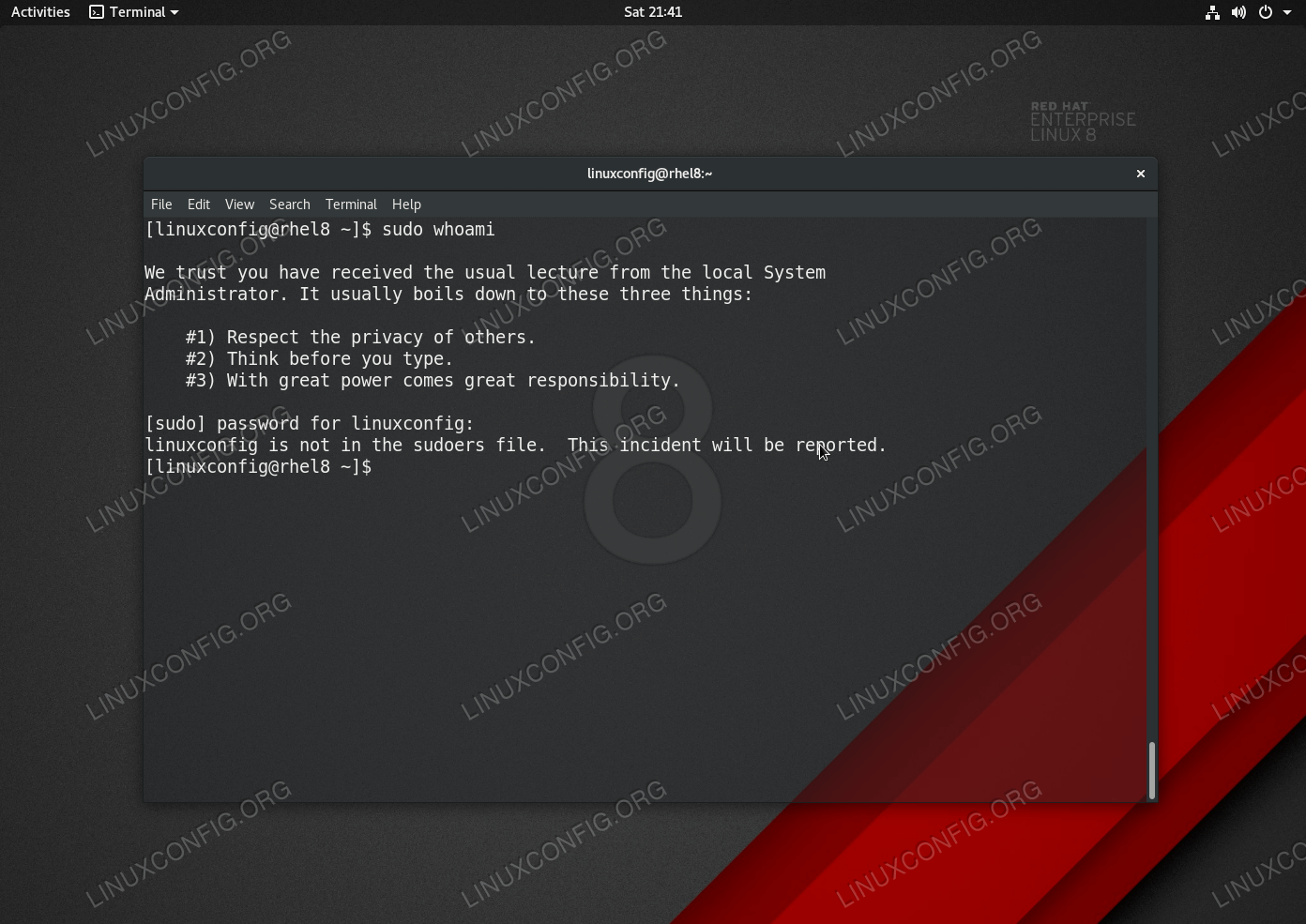
- #Allow user to sudo without password how to
- #Allow user to sudo without password install
- #Allow user to sudo without password password
- #Allow user to sudo without password windows
The sudo configuration is managed by the /etc/sudoers file.
#Allow user to sudo without password password
The problem Accessing a remote machine using private key, I usually require root permissions, which imply writing a long password and is annoying. This question is answered a number of times in the net, but none of those answer resulted useful in my case. With sudo the user can (and probably should) be required to provide a password in order to execute the application. Allowing a user to use sudo without a password (2 answers) Closed 5 years ago. If the setuid bit is set on an executable, any user would be able to run the application (or any user of a certain group, depending on the permissions used). With sudo a clear list can be made of who can execute a certain application. Unlike using the setuid bit on these applications sudo gives a more fine-grained control on who can execute a certain command and when. The app-admin/sudo package allows the system administrator to grant permission to other users to execute one or more applications they would normally have no right to. This is very useful when tracking who made that one fatal mistake that took 10 hours to fix :) One additional advantage of sudo is that it can log any attempt (successful or not) to run an application. The article strongly recommends that you also back up your entire system and all data before doing so.Root # emerge -ask app-admin/sudo Configuration Logging activity It should be emphasized that this will remove this last protective barrier between users and their own bugs.
#Allow user to sudo without password windows
Instead, it's there for the same reasons Windows annoying User Account Control, acting as an ultimate layer of protection between users, computers, and potential chaos, because a wrong command could This results in deletion of all data, destruction of settings or unintended sharing of personal information.ĭisabling a sudo password is only good for those who have a good experience with the Linux command line and are the only user on their computer. It's not difficult to reset root password if you have local access to a Linux installation.

Otherwise the fastest possible way to get a root shell via su is this: su -login, but you need to interactively enter the root password. Sudo is no longer considered as a security measure against users with local access to hardware. If you want to allow a user named vyom to execute sudo without a password, edit the /etc/sudoers file: nano /etc/sudoers Add the following line at the end of the file: yourusername ALL (ALL:ALL) NOPASSWD:ALL For example: Atlantic-Admin ALL (ALL:ALL) NOPASSWD:ALL Save and close the file. YoMismo at 17:58 If you have superuser rights anyway just give you sudo rights. Actually, there should be only one primary user with sudo privileges. If you are sharing your computer with others and want to help them out with the hassle of having to enter a password whenever they use sudo, don't do so.
#Allow user to sudo without password install
Test it with a command like sudo apt update or by installing an application with sudo apt install as test, for example: sudo apt install linksĭon't turn off sudo passwords for everyone! From now on, sudo will no longer ask for your password. Since the installation examples, the nano editor, writer should have used Ctrl + O, followed by Ctrl + X. It should look like this: USERNAME ALL=(ALL) NOPASSWD:ALLįor the alias in the example, this rule is: ducklord ALL=(ALL) NOPASSWD:ALL If not, go to the end of the file and create a new rule there. If so, please change it as shown in the section below. To prevent sudo from asking you for a password, first check if there are any existing rules with your alias. Instead, run your favorite Terminal and type: sudo visudo Turn off sudo password for your account

However, it's best not to try to edit the file directly. This is where the access to the sudo command is specified for each user account or user group. This command checks the file for syntax errors when you save it. Always use visudo to edit the /etc/sudoers file. 283 How does the ubuntu user on the AWS images for Ubuntu Server 12. The files inside this directory are included in the sudoers file. For reference, I'm leaving my previous answer: If you add a line of the form wheel ALL (ALL) NOPASSWD: ALL to /etc/sudoers (using the visudo command, of course), it will let everyone in the group wheel run any commands without providing a password.

To disable password checking when using sudo for your account, you must edit the 'sudoers' file. You can configure the user sudo access by modifying the sudoers file or by creating a new configuration file in the /etc/sudoers.d directory. to allow all users to run all commands without a password. Process details may differ in other distributions.
#Allow user to sudo without password how to
Note : This article will see how to disable sudo password in latest Ubuntu release.


 0 kommentar(er)
0 kommentar(er)
